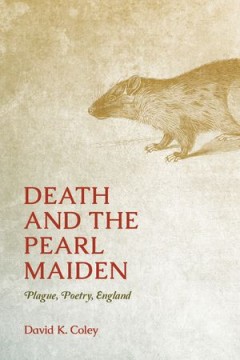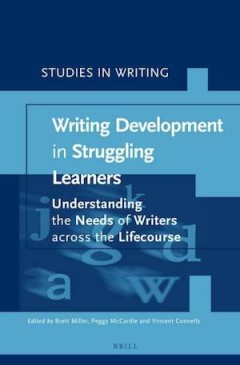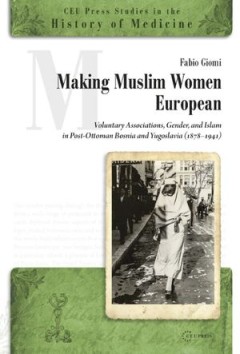Filter by

A Hand-Book for Travellers in Spain, and Readers at Home
Targeted at both intrepid travellers and 'readers at home', this two-volume account of Spanish history, topography and culture by Richard Ford (1796–1858) combines the rigour of a gazetteer with the humour and pace of a private travel diary. First published in 1845, as part of John Murray's series of guidebooks, the work made an immediate impact upon the reading public, and it was celebrated …
- Edition
- -
- ISBN/ISSN
- 9781139096140
- Collation
- -
- Series Title
- Cambridge Library Collection - Travel, Europe
- Call Number
- -

A Grammar of Semelai
Semelai is a previously undescribed and endangered Aslian (Mon-Khmer) language of the Malay Peninsula. This book - the first in-depth description of an Aslian language - provides a comprehensive reference grammar of Semelai. Semelai intertwines two types of morphological system: a concatenative system of prefixes, suffixes and a circumfix - acquired through extended contact with Malay - and a n…
- Edition
- -
- ISBN/ISSN
- 9780511550713
- Collation
- -
- Series Title
- Cambridge Grammatical Descriptions
- Call Number
- -

A Guide to Modern Cookery
The late nineteenth and early twentieth centuries witnessed a revolution in the eating habits of European households with disposable incomes. Central to the culinary history of the period is the innovative French chef Georges Auguste Escoffier (1846–1935). His cooking methods, combined with a modern approach to managing professional kitchen staff, contributed to the development of a fashionab…
- Edition
- -
- ISBN/ISSN
- 9781139626637
- Collation
- -
- Series Title
- Cambridge Library Collection - European History
- Call Number
- -

Pogrom Cries – Essays on Polish-Jewish History, 1939–1946 2nd Revised Ed…
This book focuses on the fate of Polish Jews and Polish-Jewish relations during the Holocaust and its aftermath, in the ill-recognized era of Eastern-European pogroms after the WW2. It is based on the author’s own ethnographic research in those areas of Poland where the Holocaust machinery operated. The results comprise the anthropological interviews with the members of the generation of Holo…
- Edition
- -
- ISBN/ISSN
- -
- Collation
- -
- Series Title
- -
- Call Number
- -

Tripolye Typo-chronology. Mega and Smaller Sites in the Sinyukha River Basin
The Tripolye phenomenon, which displays a specific artefact complex and an extraordinary settlement layout, is also known for its so-called ‘mega sites’. Five of the largest ‘mega’ or giant settlements measure between 150-320 ha in size. These, and other big settlements, are concentrated in the Sinyukha River Basin, which is a central part of modern Ukraine. In this region, more than 10…
- Edition
- -
- ISBN/ISSN
- 9789088909511
- Collation
- -
- Series Title
- -
- Call Number
- -

Disabled Bodies in Early Modern Spanish Literature : Prostitutes, Aging Women…
Disabled Bodies in Early Modern Spanish Literature examines the concepts and role of women in selected Spanish discourses and literary texts from the late fifteenth to seventeenth centuries from the perspective of feminist disability theories. It explores a wide range of Spanish medical, regulatory and moral discourses, illustrating how such texts inherit, reproduce and propagate an amalgam of …
- Edition
- -
- ISBN/ISSN
- 9781786940780
- Collation
- -
- Series Title
- -
- Call Number
- 800 JUA d

Death and the Pearl Maiden : Plague, Poetry, England
Shows how English responses to the Black Death were hidden in plain sight—as seen in the Pearl, Cleanness, Patience, and Sir Gawain and the Green Knight poems.
- Edition
- -
- ISBN/ISSN
- 9780814213902
- Collation
- -
- Series Title
- -
- Call Number
- 800 COL d

Demonic History : From Goethe to the Present
In this ambitious book, Kirk Wetters traces the genealogy of the demonic in German literature from its imbrications in Goethe to its varying legacies in the work of essential authors, both canonical and less well known, such as Gundolf, Spengler, Benjamin, Lukács, and Doderer. Wetters focuses especially on the philological and metaphorological resonances of the demonic from its core formatio…
- Edition
- -
- ISBN/ISSN
- 9780810129764
- Collation
- -
- Series Title
- -
- Call Number
- 800 WET d

Development of Writing Skills in Individuals with Learning Difficulties : Und…
This volume highlights writing development and its relation to other cognitive domains, such as language and reading, for individuals who struggle to acquire writing proficiency, including those with specific learning disorders (SLD; e.g., dyslexia, dysgraphia, and specific language impairment) which affect writing skills (e.g., handwriting, composition). Writing and writing development are pre…
- Edition
- -
- ISBN/ISSN
- 9789004345812
- Collation
- -
- Series Title
- Studies in Writing Volume: 35
- Call Number
- 800 MIL d

Making Muslim Women European: Voluntary Associations, Gender, and Islam in Po…
This social, cultural, and political history of Slavic Muslim women of the Yugoslav region in the first decades of the post-Ottoman era is the first to provide a comprehensive overview of the issues confronting these women. It is based on a study of voluntary associations (philanthropic, cultural, Islamic-traditionalist, and feminist) of the period. It is broadly held that Muslim women were sil…
- Edition
- -
- ISBN/ISSN
- 9789633863695
- Collation
- -
- Series Title
- -
- Call Number
- 297.092 GIO m
 Computer Science, Information & General Works
Computer Science, Information & General Works  Philosophy & Psychology
Philosophy & Psychology  Religion
Religion  Social Sciences
Social Sciences  Language
Language  Pure Science
Pure Science  Applied Sciences
Applied Sciences  Art & Recreation
Art & Recreation  Literature
Literature  History & Geography
History & Geography